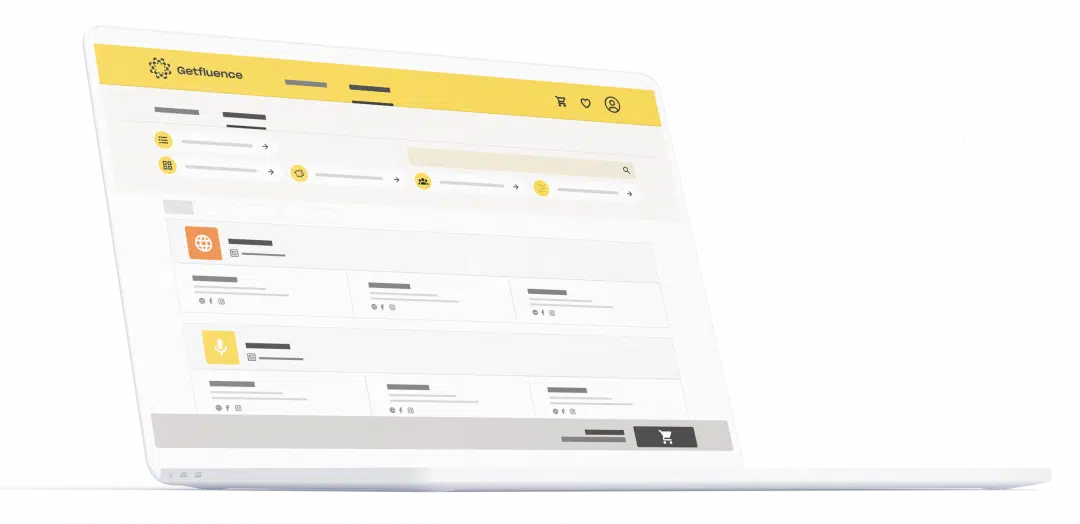Are you looking for ways to stay ahead of your competition and bring fresh ideas to your communication agency?
Do you want to keep up with industry trends and create a culture that encourages experimentation and innovation across your agency’s teams and departments?
In today’s fast-paced and constantly evolving industry, fostering a culture of innovation and experimentation is essential for success.
Without a constantly-improving environment and strategy, communication agencies may have a hard time building a long-standing approach to reach their future goals.
So, you may be wondering…
How can communication agencies promote innovation and experimentation successfully across different teams and departments?
Well, let’s go over some practical strategies to inspire innovation and experimentation in your agency, and overcome the challenges that come with it.
The benefits of innovation and experimentation across your agency’s teams
Innovation and experimentation are not just buzzwords – they are critical factors that will contribute to the success of your communication agency.
But before we dive into why they matter and their benefits, let’s start with a basic definition of each.
Innovation can be defined as the introduction of new ideas or methods that bring about positive change – such as new, smarter procedures, better technologies, and improved ways of communicating.
Experimentation, on the other hand, involves testing these ideas or methods to determine their effectiveness.
When applied across teams and departments, innovation and experimentation can lead to significant benefits for an agency.
Here are the most frequent advantages of promoting innovation and experimentation across agencies’ different teams:
- Staying ahead of the competition
A culture of innovation can help communication agencies keep up with the latest trends, technologies, and consumer behaviors.
By constantly testing new ideas and exploring new possibilities, agencies can stay ahead of the curve and maintain a competitive edge.
- Improved efficiency and productivity
Experimentation can help teams identify areas of inefficiency and develop new processes that are more streamlined, effective, and cost-efficient.
This can contribute to higher-quality work, faster turnaround times, and more satisfied clients, ultimately leading to increased revenue and growth.
- Fostering creativity, learning, and collaboration
Experimentation allows teams to explore new ideas and approaches, fostering creativity and a culture of continuous learning.
Collaboration between different teams and departments can lead to new perspectives and insights, driving innovation and experimentation forward.
- Attracting and retaining top talent
A culture of innovation can help communication agencies attract and retain top talent by providing an environment where creativity and experimentation are encouraged.
Creating such an environment can foster agencies to stand out in a crowded market and become a destination for the best and brightest talent.
- Future-proofing the agency
Innovation and experimentation can help communication agencies stay relevant and competitive by adapting to changing market conditions and consumer preferences.
This gets particularly important when facing emerging industry trends and disruptors.
By embracing new ideas and exploring new possibilities, agencies can stay ahead of the curve and remain relevant and successful for years to come.
The challenges of encouraging innovation and experimentation across different departments or teams

Promoting innovation and experimentation across different departments comes with multiple challenges.
Here are some of the most common hindrances that agencies face when trying to encourage innovation and experimentation across their teams:
- Resistance to change
Needless to say, many employees are resistant to change and prefer to stick with familiar processes and methods.
This can make it difficult to introduce new ideas and experimentation, as employees may be reluctant to try new things or step outside of their comfort zones.
- Siloed departments
In many communication agencies, different departments work in isolation from one another, with little collaboration or cross-functional communication.
These are also known as marketing silos.
Marketing silos can make it difficult to share ideas and knowledge and to promote a culture of experimentation and innovation.
- Fear of failure
Many employees may be afraid to take risks or try new things for fear of failure.
This can lead to a culture of risk aversion, where employees are unwilling to step outside of their comfort zones and try new approaches.
- Conflicting priorities and incentives
Conflicting priorities and incentives pose significant challenges to innovation and experimentation within different teams and departments.
For instance, if one team is incentivized to prioritize short-term results and another team is instructed to focus on long-term innovation, it can create tension and hinder cross-functional collaboration.
Additionally, competing goals and priorities can lead to a lack of alignment, which can make it difficult for teams to work together towards a common goal.
- Lack of leadership support
Finally, promoting a culture of innovation and experimentation requires buy-in and support from leadership at all levels.
If leadership is not committed to these values, it can be difficult to make meaningful progress.
With the support of agency directors and managers at higher levels, it is more likely for other employees to contribute to innovation and experimentation and to help the organization follow through with the process.
Strategies for encouraging innovation and experimentation across different departments or teams
We have seen the benefits and the challenges of promoting innovation and experimentation across agencies’ different teams and departments. Now, let’s go over the best ways to do it.
Here are 5 best practices to encourage innovation and experimentation within your agency’s teams:
- Promote a culture of experimentation and learning
One of the most critical factors for promoting innovation and experimentation is establishing a culture that inspires them.
To create a culture of innovation, leaders should encourage employees to be curious and to explore new ideas.
Communication agencies can also host brainstorming sessions, hackathons, or innovation challenges to promote new ideas and creative thinking.
Encouraging experimentation, learning from failures, and rewarding innovation can also help create such a stimulating culture.
- Provide resources and training
To foster innovation and experimentation, communication agencies should ensure that employees have the necessary resources and training to explore new ideas.
This may include providing access to technological tools, internal mentorships, and funding from the agency.
By investing in resources and training, agencies can support employees in developing their skills and knowledge and encourage them to try new things.
- Encourage cross-functional collaboration and knowledge sharing
When teams work together, they can share insights and expertise, and come up with better ideas than they would have on their own.
Encouraging cross-functional collaboration is therefore crucial, as it can help break down marketing silos and promote a culture of learning and experimentation.
One way to do this is to create cross-functional teams that bring together employees from different departments or areas of expertise.
In addition, communication agencies can encourage employees to share knowledge and insights through regular meetings, training sessions, or other knowledge-sharing activities.
- Celebrate and learn from both successes and failures
When employees feel that their successes are recognized and celebrated, they are more likely to continue trying new things.
Similarly, when they feel that their failures are recognized as learning opportunities, they are more willing to keep experimenting and taking risks.
That’s why it’s important to empower employees by both recognizing their successes and their mistakes.
Communication agencies can do this in a number of ways, such as by sharing success stories or hosting “failure parties” to celebrate and learn from unsuccessful experiments.
- Align incentives and goals
Finally, aligning incentives and goals is a crucial factor to keep in mind for promoting innovation and experimentation.
When employees’ incentives and goals are aligned with experimentation, they are more likely to take risks and try new things.
For example, communication agencies can offer bonuses or other incentives for successful experiments, or they can tie employee evaluations to their ability to experiment and innovate.
In addition, communication agencies can set goals and metrics that encourage experimentation, such as setting targets for the number of experiments that should be conducted each quarter.
Build a future-proof communication agency with Getfluence

As we have seen, innovation and experimentation can determine a communication agency’s long-term success, and help it to avoid fast-changing industry trends or disruptors.
Such strategies are effective because of their future-oriented, always-evolving approach, which can help agencies to keep up with the pace of today’s digital market.
On the other hand, agencies that don’t adapt to the latest trends in the industry are likely to face a higher risk of failure and an overall higher instability.
That’s why it’s crucial to keep up with the industry’s latest technologies and tools, not to get overcome by either the changes in the market, or competitors who use them to their advantage.
One way you can do it is with Getfluence.
Getfluence is a global marketplace that can help you build future-proof communication by elapsing banner blindness, the dangerously growing tendency of readers to ignore traditional advertising.
By allowing you to publish content that associates with your agency or with your clients’ brands on 10.000+ publishers all over the world, Getfluence can help your message stick in your audience’s mind, and create long-lasting communication.
With Getfluence, you can build a stable communication strategy at competitive prices, directly pre-negotiated for you with the world’s top publishers, such as The Economist and Forbes.
If you want to dominate tomorrow’s overcrowded digital world, then Getfluence is the answer you’re looking for.
Want to see it yourself?
Build a future-proof communication agency with Getfluence now↗️





